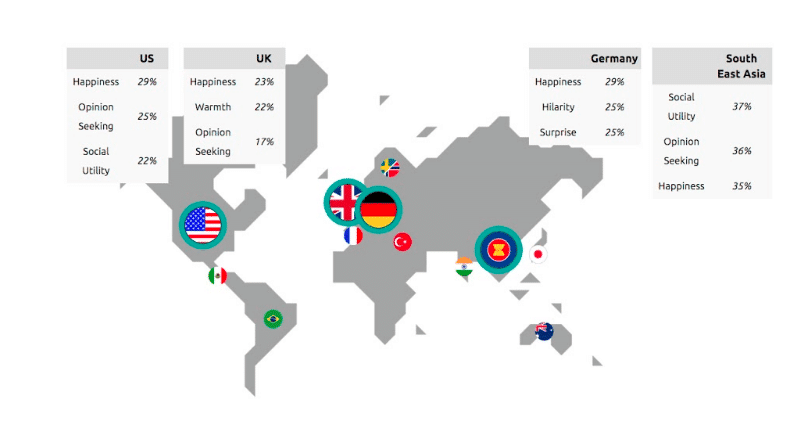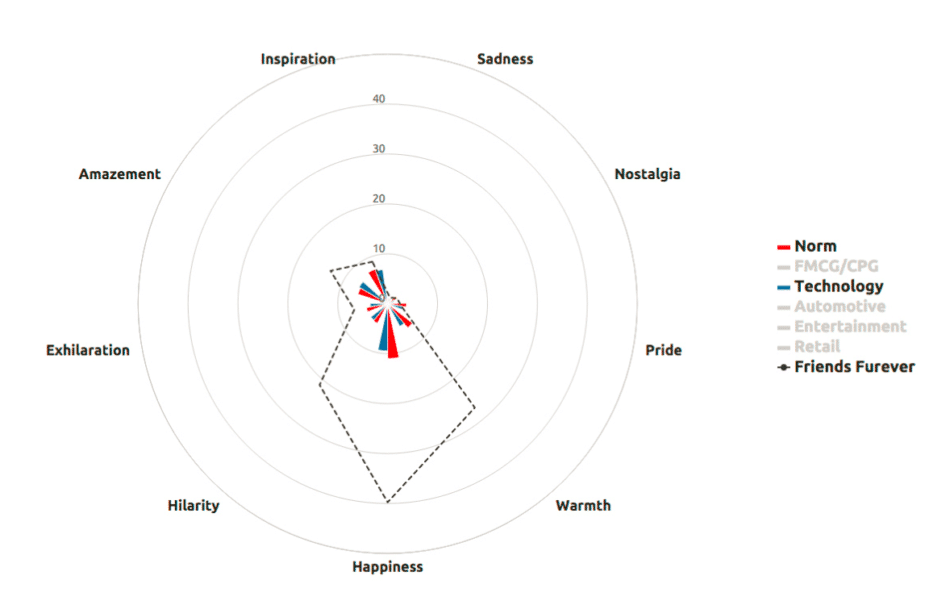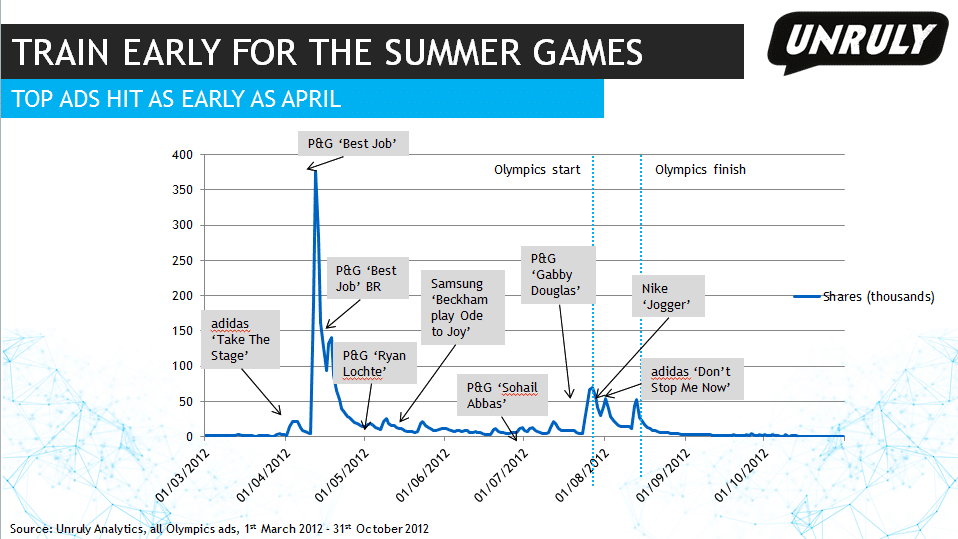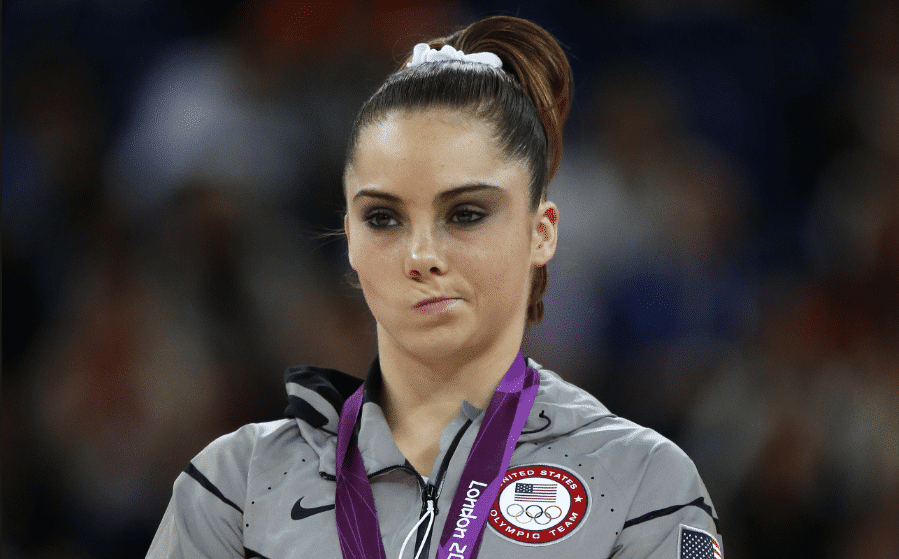30 Days To Rio: Seven Steps To Olympic Advertising Success
With only 30 days to go until the Olympic flame reaches Rio De Janeiro, athletes aren’t the only ones getting their game-faces on.
Slowly but surely, brands like Samsung, Nike and Gatorade have been releasing their Olympic 2016 spots, with varying approaches and success.
One formidable contender is P&G’s ‘Strong’ – the consumer goods giant’s majestic and moving follow-up to its 2012 champ ‘Best Job’, the most-shared Olympic ad of all time.
Meanwhile, Visa’s high-sharing entry showcases an entirely different approach: light-hearted, colourful and grounded in humour. These ads demonstrate just how varied Olympic campaigns can be.
However, the best in the business do have a few things in common and we’ll be running down what makes the crucial difference between bronze and gold in the Social Video Olympics.
Without further ado, let’s fire the starting pistol.
1. Think Happy
As with any social video advert, viewers always need a good reason to share. This goes equally for Olympic campaigns. The main drivers of sharing are the strength of the emotional responses it elicits from the audience and the social motivations it gives viewers to share the content far and wide.
By using the right mix of emotional and social triggers, video campaigns can cross geographical and linguistic borders. But, as the map below shows, the most common drivers of video sharing also differs greatly by territory.

Some emotions do resonate globally, however. Happiness is the most common emotion globally, which makes it an ideal emotional trigger for brands looking to create content that will resonate across national boundaries.
This is one of the reasons why Google Android’s “Friends Furever”, which made people four times happier than the average ad (see below), is the most shared ad of all time.

2. Gold Medal Emotions
But if you’re campaign isn’t all rainbows and lollipops, don’t worry! What an advert like “Friends Furever” really succeeds at is delivering strong, clear emotions. This is similarly true of Samsung’s Rio effort, ‘The Chant’.
While it’s certainly not a sweet or cuddly spot, the emotions are dialed up to 11 – and that is exactly what fuels sharing.
But are there any particular emotions that are more likely to resonate with Olympic campaigns?
Well, certainly, when looking at the most shared Olympic ads of all time, two key emotions do come up again and again – pride and inspiration.
So you can choose to either drive these emotions up to 11 when creating your campaign. Or, of course, you can try and stand out from the crowd by doing something completely different.
3. Train Early
As with any sporting endeavour, timing is key.
While common sense might suggest a release schedule close to the beginning of the Games, data from the 2012 Olympics tells a rather different story. In fact, some of the most popular campaigns from that games, including the aforementioned ‘Best Job’, were released as early as April (see chart below)!

Just like competing at the Olympics itself, most of the work is done way before the gun starts when the field is a little less crowded.
It’s also important to understand the rate at which viewers watch and share videos.
Interestingly, this also varies between countries. For example, in Australia the first 24 hours are crucial, with the average Australian ad generating 21.4% of its total shares within the first day of its launch.
Meanwhile, Japanese ads get off to a much slower start, with the average ad attracting only 11.8% of its total shares in the first 24 hours.
4. Don’t Forget the Hosts
Brazil is not only the home of this year’s Summer Olympics, it’s also the home of online video.
Studies show that Brazilians are more likely to buy a product or love a brand after viewing an online ad than consumers in the US, South-East Asia and Europe. In fact, two-thirds of Brazilians have a more favourable view of a brand after watching an ad, compared with 58% across ASEAN markets and 41% in the US.
What this means for global brands is that Rio 2012 is a remarkable opportunity not to be squandered.
And while the international online audience is hugely important, it’s important not to forget the nation of online video savvy fans on the tournament’s doorstep.
5. Celebrity Endorsements
Now, usually when we are talking about getting celebs to front your ad campaigns, we usually advise brands to save their cash.
Why? Because all the data suggests that famous faces have very little effect on online sharing or business metrics. You only need to look at the most shared ads of 2015 to see that.
However, sports stars do seem to be an exception to the rule. In fact, all of the top 10 football ads of all time feature world famous footballers (past and present). It’s not surprising, they’re national heroes, superb physical specimens and everyone knows athletes make great actors.
Certainly, sporting cameos have produced some tremendous Super Bowl, World Cup and Olympic ads. Nike has devoted years and millions of pounds to making footballers into movie stars (they even animated them!) and a campaign can be made to shine thanks to a particular athlete’s star power.
That being said, simply throwing a famous face at a campaign is not always the answer. The wrong celebrity can be distracting and polarizing, so pick carefully.
6. Don’t Rely On Laughs
Humour is undoubtedly one of the most effective emotional triggers in social video advertising, but too many brands try to be funny and fail. As any comedian will tell you, making someone laugh is the harder than it looks.
Different people find different things funny, plus humour doesn’t always translate across borders. It’s also the most overused emotional trigger, making it harder to stand out from the crowd.
Instead, think about creating uplifting content. Think about creating content that will inspire. Look at the most shared ads of 2015 and you’ll that only a few tried to make us laugh.
7. Stay Agile
During an event as high-intensity as the Olympics, attention is at an absolute premium. To make sure you’re maximising the effect of your campaign, you need to know what trends have been dominating the social video sphere.
Of course, these vary from year to year, but we have recently seen a fascinating and diverse crop of social trends. We’ve seen the fabled rise of dogvertising (once and for all trumping cats, the internet’s supposed pets of choice), ads which are indistinguishable from music videos and a greater focus on female empowerment. On this last trend, Always has already released its excellent ‘Keep Playing’ in time for Rio.
https://www.youtube.com/watch?v=Emawq64b0DU
By keeping an eye on what’s setting the social web on fire, you can ensure that your Olympics campaign does the same.
But it’s not the social video trends you need to be looking out for – it’s also what’s going on during the Games – on and off the field. As we know, staying agile is the key to sporting success. So marketers need to see what is trending around the Games themselves. Otherwise, they’ll finish the Games as unimpressed as US gymnast McKayla Maroney, whose disgruntled podium pic sparked an internet phenomenon (pic below).

A good recent sporting example of this is Licor Beirão, a Portuguese liqueur brand which created this very funny advert ahead of the European Football Championships, just days after a nasty incident involving a Portuguese player and England striker Harry Kane.
Marketers looking for a quick video turnaround could also look at short-form platforms such as Snapchat, Instagram or Vine.
After all, the brands which are as quick as the athletes competing will have the best chance of taking gold this summer.
Now Get Going…
With these handy tips safely secured in your Lycras, it’s time to start gearing up for another ad-heavy Olympics. See you on the podium.
To find out more about Olympic advertising check out our webinar, hosted by Unruly’s VP Marketing & Insight Devra Prywes, on July 13th.
